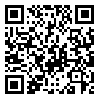Accepted Manuscripts
Back to the articles list |
Back to browse issues page
Reza Soltani 
 , Hojjat-Allah Abbaszadeh
, Hojjat-Allah Abbaszadeh 
 , Mohsen Norouzian
, Mohsen Norouzian 
 , Fakhroddin Aghajanpour
, Fakhroddin Aghajanpour 
 , Azar Afshar
, Azar Afshar 
 , Abbas Aliaghaei
, Abbas Aliaghaei 
 , Nafiseh Moeinian
, Nafiseh Moeinian 
 , Ali Dehghani nejad
, Ali Dehghani nejad 
 , Fatemeh Fadaei Fathabadi
, Fatemeh Fadaei Fathabadi 
 , Mohammad-Amin Abdollahifar
, Mohammad-Amin Abdollahifar 


 , Hojjat-Allah Abbaszadeh
, Hojjat-Allah Abbaszadeh 
 , Mohsen Norouzian
, Mohsen Norouzian 
 , Fakhroddin Aghajanpour
, Fakhroddin Aghajanpour 
 , Azar Afshar
, Azar Afshar 
 , Abbas Aliaghaei
, Abbas Aliaghaei 
 , Nafiseh Moeinian
, Nafiseh Moeinian 
 , Ali Dehghani nejad
, Ali Dehghani nejad 
 , Fatemeh Fadaei Fathabadi
, Fatemeh Fadaei Fathabadi 
 , Mohammad-Amin Abdollahifar
, Mohammad-Amin Abdollahifar 

Abstract: (306 Views)
Background: Spermatogenesis is a complex physiological process susceptible to various influencing factors, among which scrotal hyperthermia is noteworthy. This investigation assesses the impact of conditioned medium derived from Sertoli cells on spermatogenic activity within the testicular tissue of adult male mice after exposure to scrotal hyperthermia. Methods: A cohort of 40 adult male NMRI mice was employed in this research, and they were allocated randomly into four distinct groups as follows: (1) the control group comprising untreated animals, (2) the hyperthermia group subjected to scrotal hyperthermia through immersion in water at a temperature of 43°C for 20 minutes, administered five times every other day, (3) the DMEM group receiving 10μl of Dulbecco's Modified Eagle Medium (DMEM), and (4) the Sertoli cell-conditioned medium (SCCM) group, administered 10μl of SCCM. After the induction of hyperthermia, intraperitoneal injections of SCCM were administered to the mice daily for 35 days. Samples of sperm were gathered from the epididymal tail, and the testis tissue was subsequently harvested for histological examination and molecular analysis. Results: Our findings revealed that the administration of SCCM yielded significant increases in the quantities of sperm and germ cells compared to the control, DMEM, and hyperthermia groups. Additionally, the relative gene expression levels of C-kit, Stra8, and PCNA exhibited substantial elevation within the SCCM group compared to the other experimental groups. Conclusion: The utilization of SCCM holds promise as a therapeutic intervention for addressing infertility concerns, and it presents potential applications within the realms of the field of reproductive medicine.
Type of Manuscript: Experimental research article |
Subject:
Others
| Rights and permissions | |
 |
This work is licensed under a Creative Commons Attribution-NonCommercial 4.0 International License. |



